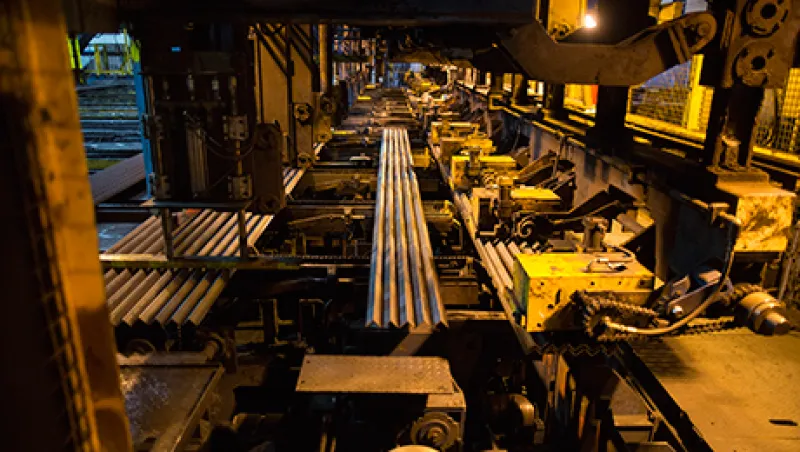Factory laborers long ago lost their jobs to robots. Warehouse workers could be next in line. Might millions of white-collar workers — paralegals, bank analysts, accountants, even programmers — someday find that they, too, are expendable?
Many economists say technological advances will roil labor markets in ways we’re just beginning to understand. In one frightening forecast, researchers at the University of Oxford say that as many as 140 million knowledge workers could lose their jobs to computerization in the coming decades.
As robots and automation software grow cheaper and more sophisticated, many economists fear a future filled with widespread layoffs and wage cuts. In this pessimistic scenario, employers swap human workers for machines that are fast and reliable — and don’t call in sick, check Facebook while they’re on the clock or file workers’ compensation claims.
“At every level — retail, hospitality, manufacturing, distribution, professional — we are using technology and automation to replace labor,” says KC Conway, an economist and futurist who is a senior vice president of credit risk management at SunTrust Bank in Atlanta. “We’re creating this incredible skills gap. We’re eradicating that blue-collar employee who isn’t trained for the new types of jobs.”
Conway points to historically low labor force participation rates — the level stood at 62.6 percent in August — as an early indicator of the toll that automation has taken.
Not everyone sees automation as a dire threat to economic stability. Ever since the Luddites destroyed textile machines in the early 19th century, workers have been afflicted with “automation anxiety,” says Massachusetts Institute of Technology economist David Autor. But in reality, each wave of mechanization has been followed not by poverty but by ever rising prosperity.
“Because machines both substitute for and complement human labor, focusing only on what is lost misses the central economic mechanism through which productivity growth raises the value of the tasks that workers uniquely supply,” Autor wrote in a 2014 paper.
Henrik Christensen, a computing professor and director of the Robotics & Intelligent Machines Center at the Georgia Institute of Technology, is equally optimistic. He sees robots as a way to relieve workers of “dirty, dull and dangerous” tasks — toiling in a 100-degree warehouse, for instance, or heaving back-wrenching loads.
“It’s not about removing the workforce,” Christensen said in a 2013 speech. “It’s about empowering the workforce.”
Automation proponents echo Autor’s prediction that robots will replace low-skilled jobs but ultimately boost economic productivity and eventually create more opportunities for workers.
Automating not only makes companies more efficient but also lets workers move out of low-paying positions and into better-paying jobs, says Robert Doyle, director of communications for the Association for Advancing Automation in Ann Arbor, Michigan.
“Employees who were doing what we call dull, dirty and dangerous jobs are now doing much more productive jobs, much more fulfilling jobs,” Doyle explains. “We definitely believe that automation creates better jobs, higher-paying jobs, and is better for the economy.”
Columbia University economist Jeffrey Sachs, director of the school’s Earth Institute, sees a very different future. A paper he coauthored this year with Boston University’s Laurence Kotlikoff, Guillermo LaGarda and Seth Benzell predicted painful job losses. Their research shows that robots, or smart machines, will take a larger share of income, leaving a smaller share for workers. That presents politicians with the challenge of imposing a “robot tax” or some other way to make up for tax revenue lost from wage earners. “Absent appropriate fiscal policy that redistributes from winners to losers, smart machines can mean long-term misery for all,” they wrote.
U.S. factory workers already have suffered, losing their once-lucrative jobs to robots and to cheaper labor in China. A U.S. factory that employed hundreds of employees can operate with a fraction of that number today.
Next up are warehouse workers, who perform routine, low-skill tasks. Online retailing giant Amazon.com in 2012 paid $775 million for North Reading, Massachusetts–based Kiva Systems, a maker of robots designed for distribution centers. A typical Amazon fulfillment center still employs hundreds of low-wage order pickers who patrol the aisles in search of items ordered by shoppers, and Autor says their jobs are safe for now.
“There is at present no technologically viable or cost-effective robotic facsimile for these human pickers,” he wrote in the 2014 paper. “The job’s steep requirements for flexibility, object recognition, physical dexterity and fine motor coordination are too formidable.”
Driverless cars aren’t ready for prime time either, but roboticists predict a not-too-distant day when buses and delivery trucks operate without drivers. FedEx Corp. and United Parcel Service trucks might be automated, but a human worker would remain, Christensen says.
“There’s still going to be a guy in the back of the truck delivering the packages,” Christensen said in his 2013 speech. “But if you don’t have to require that he has a driver’s license, his salary goes down significantly.”
The conventional wisdom has held that workers without college degrees or specialized skills are the most menaced by machines. Security guards, for instance, could lose their jobs as drones and other systems let one person monitor multiple locations.
Workers higher on the wage scale have been mostly unscathed, but the pessimists say that their day is coming. SunTrust’s Conway notes that bank stress testing now is done by software rather than by human analysts, and CPAs have already lost clients who prefer to buy tax-preparation software. Even coders could lose their jobs and endure pay cuts as automation improves, Sachs and his co-authors predict.
University of Oxford researchers Carl Frey and Michael Osborne, meanwhile, say that insurance underwriters, loan officers, paralegals and tax preparers are among the white-collar positions quite likely to be replaced by computers. “Sophisticated algorithms could substitute for approximately 140 million full-time knowledge workers worldwide,” they wrote in a 2013 paper.
If those dire predictions come true, the effects would ripple through the economy. “All of the implications haven’t really been thought through,” Conway says.






